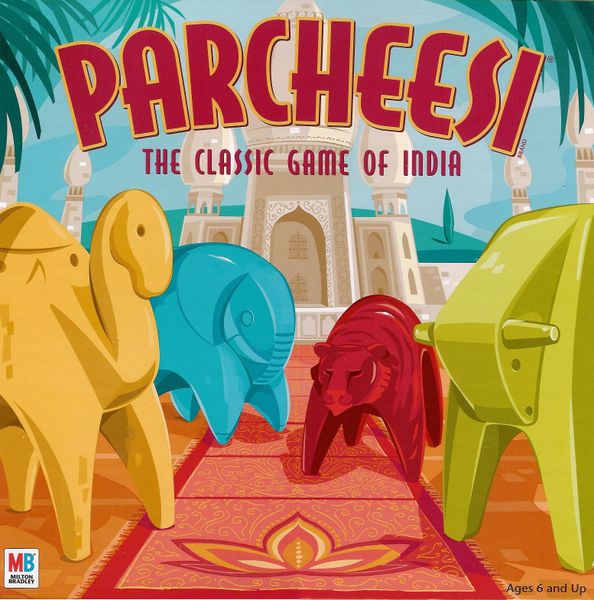Pachisi (400) Board Game
Pachisi is a traditional Indian board game that dates back to the 4th century. It is sometimes referred to as the national game of India and has been enjoyed by people of all ages for centuries. The game was believed to have been played by Indian royalty and has since spread to various parts of the world, gaining popularity in different cultures.
Game Components of Pachisi
How To Setup Pachisi
To set up Pachisi, start by placing all pieces in the central Charkoni square. Each player selects four pieces of their chosen color. The board is laid out with its cross-shaped design, ensuring each player’s path is clear. Players decide who starts by throwing the cowrie shells; the player with the highest score begins the game.
Gameplay Mechanics and Game Objective
Player Experience
Pachisi is a game of strategy and partnership, requiring players to work together to ensure both team members complete the circuit. The game demands a balance between advancing your pieces and protecting them from capture. Experienced players can influence the cowrie shells’ landings to their advantage, adding a layer of skill to the game. The dynamic of teamwork and the unpredictability of the cowrie shells make each game engaging and challenging.
Pros
Cons
Personal Thoughts on Pachisi
Pachisi is a game that appeals to those who enjoy strategic gameplay and historical depth. It is ideal for families or friends looking to engage in a game that combines luck, strategy, and teamwork. The game’s complexity and the need for precise rolls make it more suited for players who enjoy a challenge and are willing to invest time in learning the rules. For anyone interested in exploring traditional Indian games or seeking a game with a rich cultural background, Pachisi is an excellent choice.
We are supported by our audience. When you purchase through links on our site, we may earn an affiliate commission, at no extra cost for you. Learn more.

